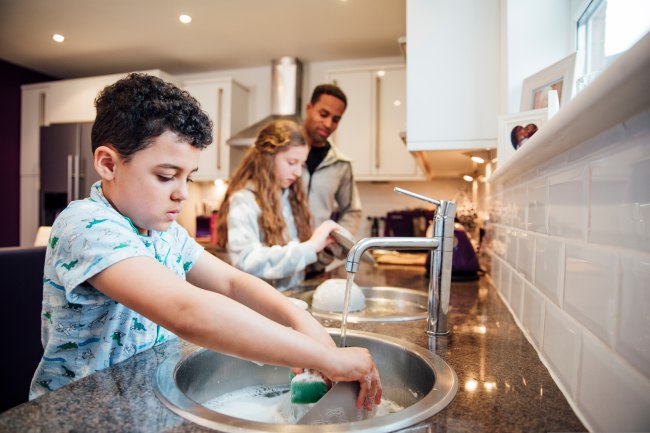News
Water you thinking? Brits way off on daily usage
New figures reveal widespread confusion about water use as dry spring adds pressure to supplies
New research reveals that most people in England and Wales dramatically underestimate how much water they use each day – a growing concern as the driest spring in England since 1893 has put increasing strain on the nation’s water resources, and the Environment Agency has declared a drought in the north of England.
A poll by Water UK found that people in England and Wales believe their household uses just 62 litres of water per day, roughly the amount used in a five-minute shower. In reality, the average household uses 323 litres per day(1). That’s more than five times the amount households think they use.
Alarmingly, 9 in 10 Brits still believe their household is using an ‘average’ or even ‘below-average’ amount.
Water blindspots: where we’re getting it wrong
- Washing a car with a hose uses around 400 and 480 litres(2) of water, yet the public underestimate this by nearly 70%, with an average estimate of just 122 litres.
- A leaking toilet flush can waste between 215 and 400 litres per day(3), but 69% of people think it’s less than 50 litres.
- Most people think filling a bath is the most water-intensive activity, when in fact, washing a car or a faulty toilet flush can use far more.
- Two thirds of people say they rarely or never consider how much water a plant needs before buying it.
Matt Bright, Water UK Director of Campaigns, said:
“These findings are a wake-up call. It’s been the driest spring in England in 132 years, and too many of us are unaware of how much water we use, and waste, every single day. Without greater awareness, efforts to tackle shortages and protect the environment risk falling short.
“With climate change and population growth adding pressure to water supplies, saving water isn’t just a personal choice, it’s a national priority.”
Water UK is urging the public to take simple steps to reduce water waste this summer, including fixing leaky loos, choosing water efficient appliances, and using water more wisely outdoors. Not only will this help the environment, it will save households money on their water bill too.
The water industry also recognises it has a part to play. Leakage from water mains is now at its lowest level on record, with reductions every year since 2020. Companies are on track to cut water mains leakage by a further 17% by 2030. Over the next five years, water companies will invest £104 billion to secure our water supplies, end sewage entering our rivers and seas, help build more homes and support economic growth.
Water UK is also calling for the creation of a National Water Grid for England to address regional water supply imbalances and enhance resilience to droughts. This would involve moving water from areas with surpluses to areas with deficits, potentially through a network of pipes, canals, and reservoirs.
ENDS
Notes to editors:
(1) The average person uses 137 litres of water per day (source: DiscoverWater). There is an average of 2.36 residents per household (source: ONS)
(2) Source: RAC
(3) Source: Thames Water
Polling:
2,069 adults in England & Wales interviewed online 16-18 May 2025. Data weighted to be representative by age, gender, region, education and ethnicity.
Our Water's Worth Saving top tips to cut water waste:
Fix leaky loos
- A dripping or leaking toilet can waste up to 400 litres a day. That’s more than an average family uses in a day.
- Check your cistern for leaks and get them fixed.
Ditch the hose
- Washing your car with a hosepipe can use up to 480 litres of water.
- Use a bucket and sponge instead – it's just as effective and uses a fraction of the water.
Water plants wisely
- Use a watering can instead of a hose, and avoid watering during the heat of the day.
- Collect rainwater in a water butt to use on your garden.
Use water efficient appliances
- Look for water-saving labels when buying dishwashers, washing machines, and shower heads.
- Only run washing machines and dishwashers with full loads.




